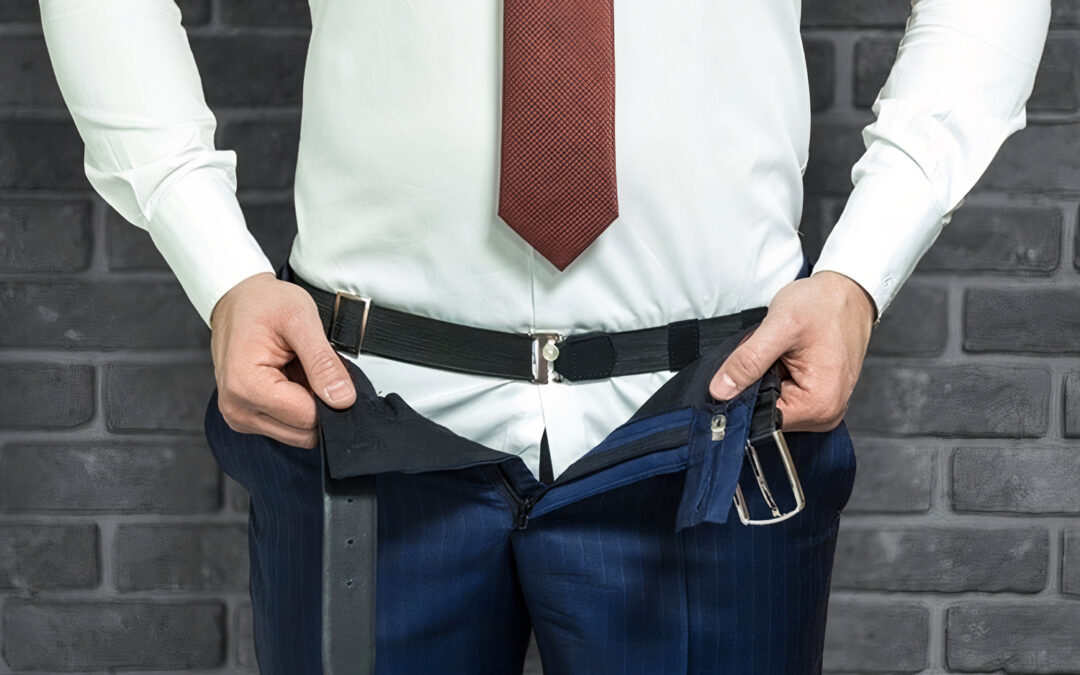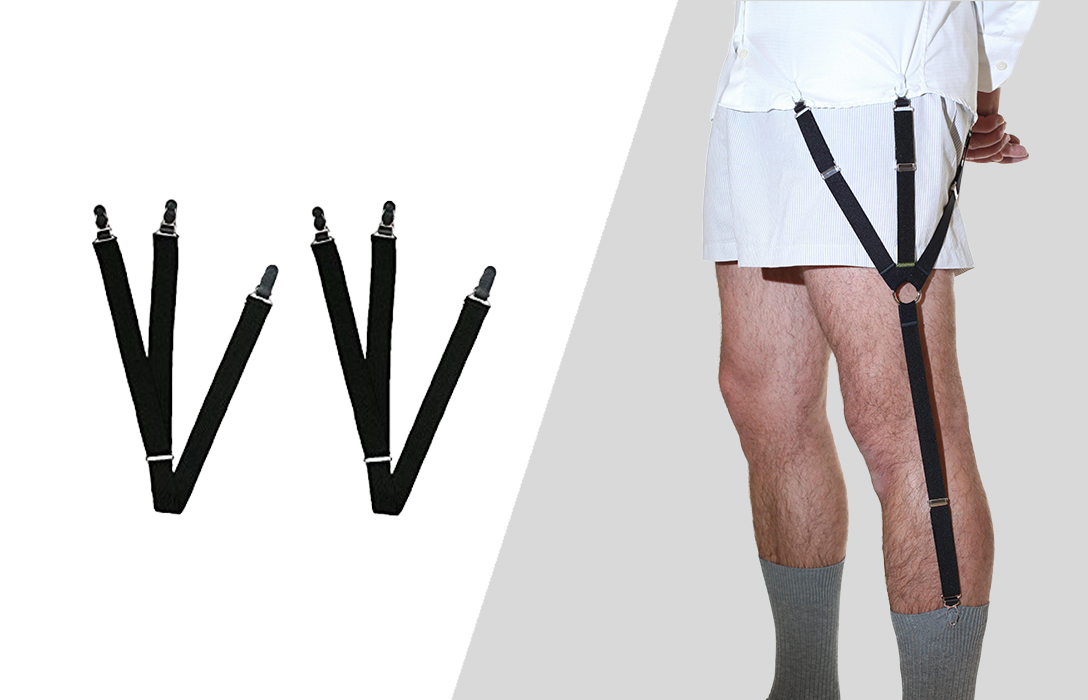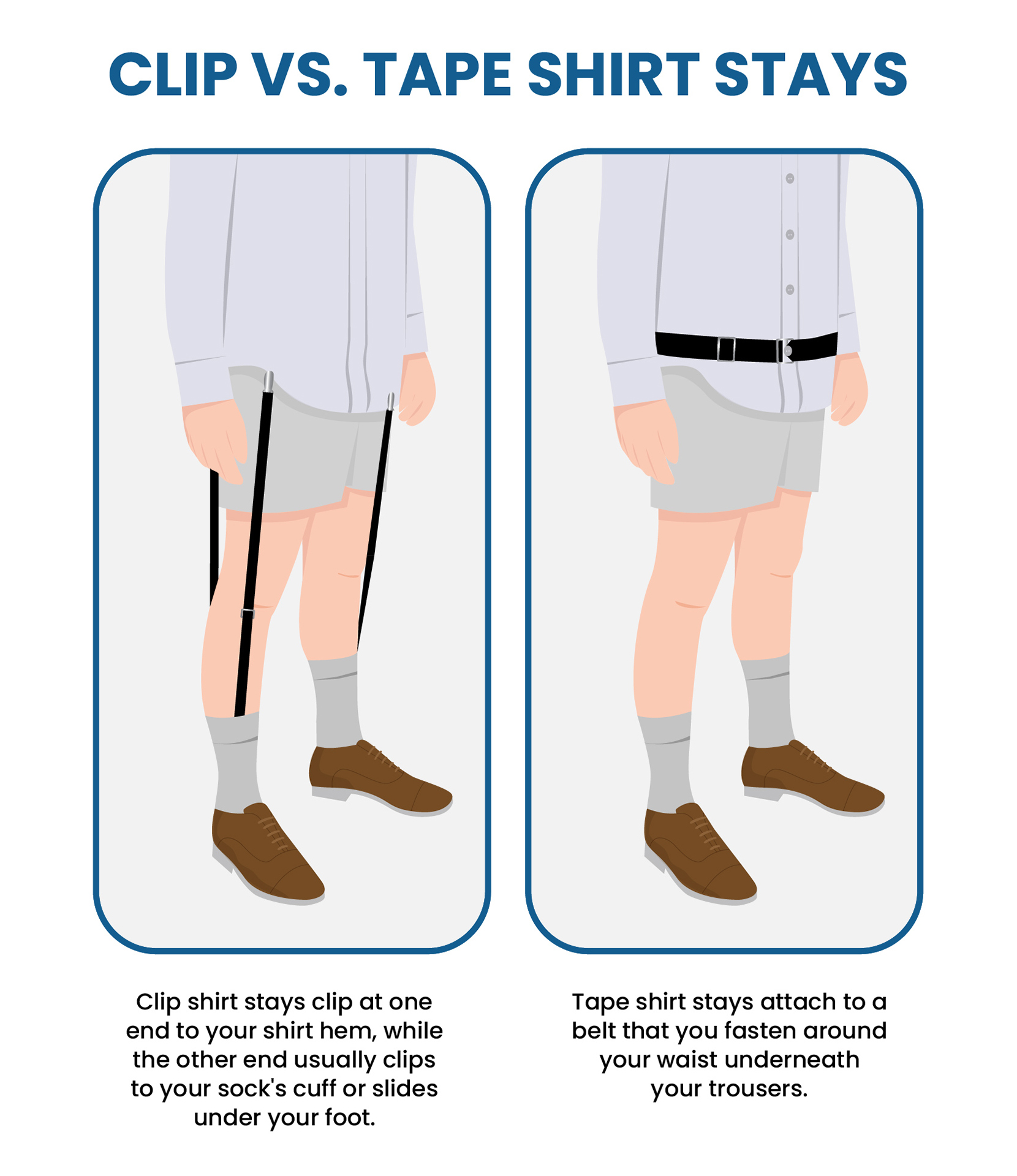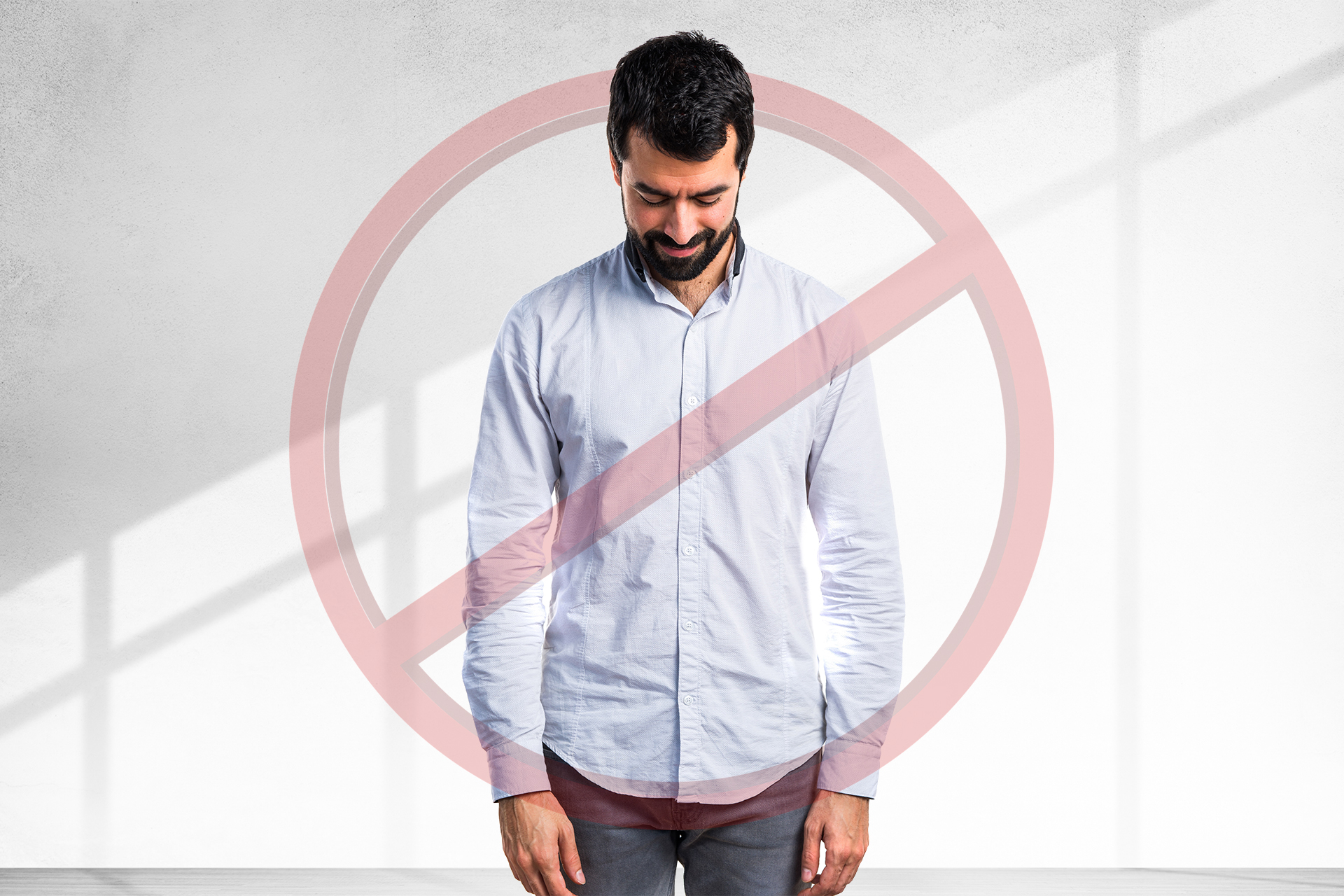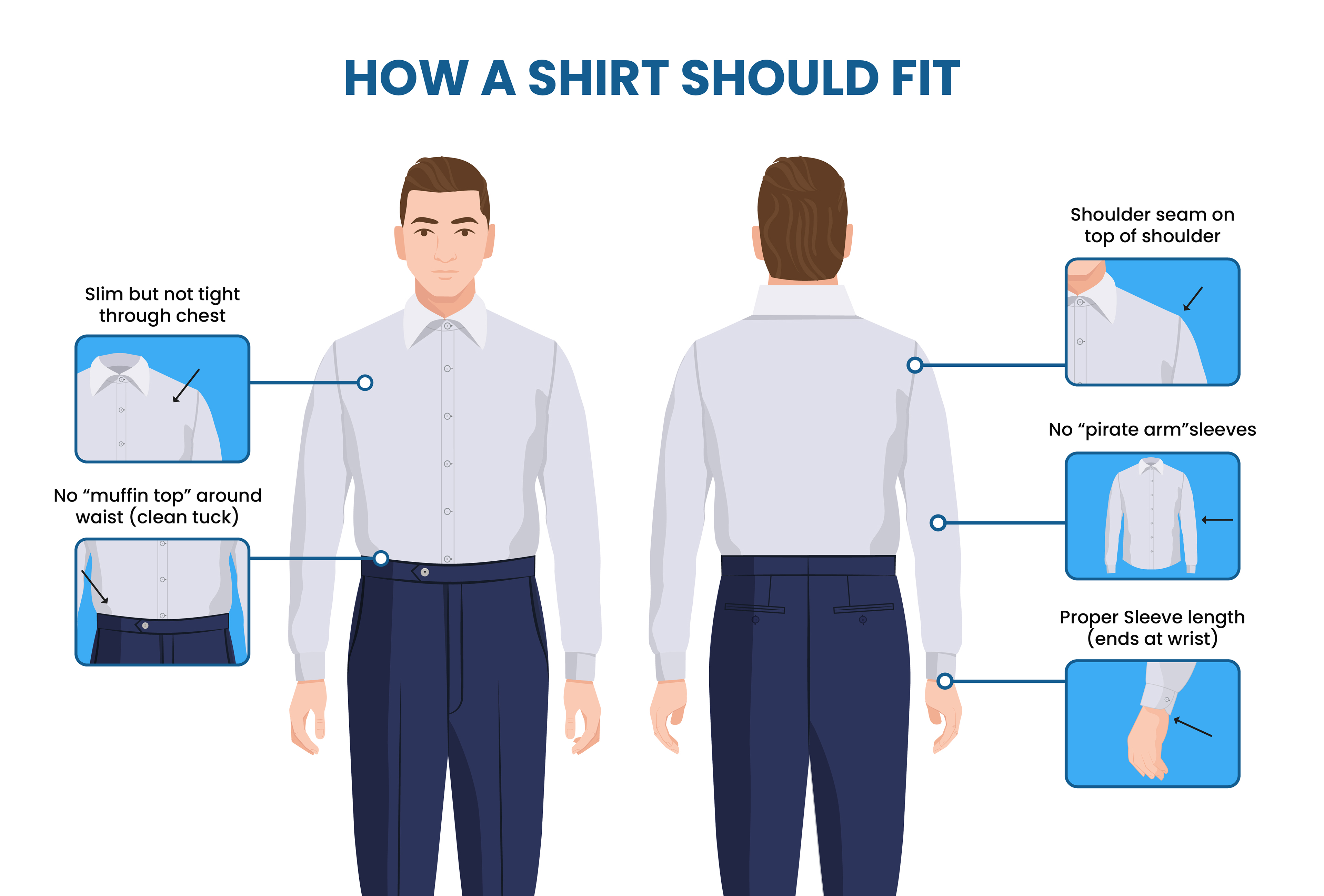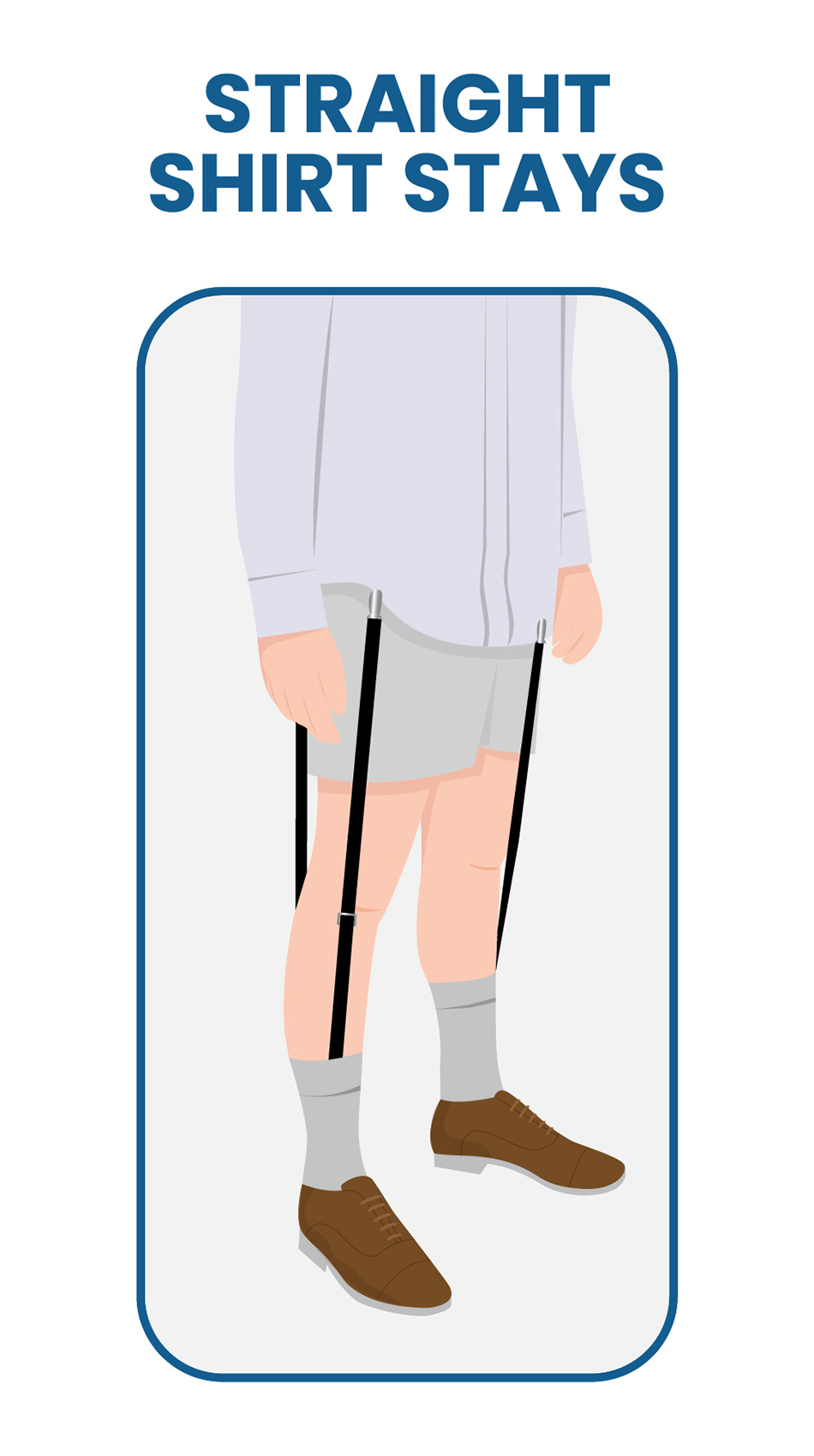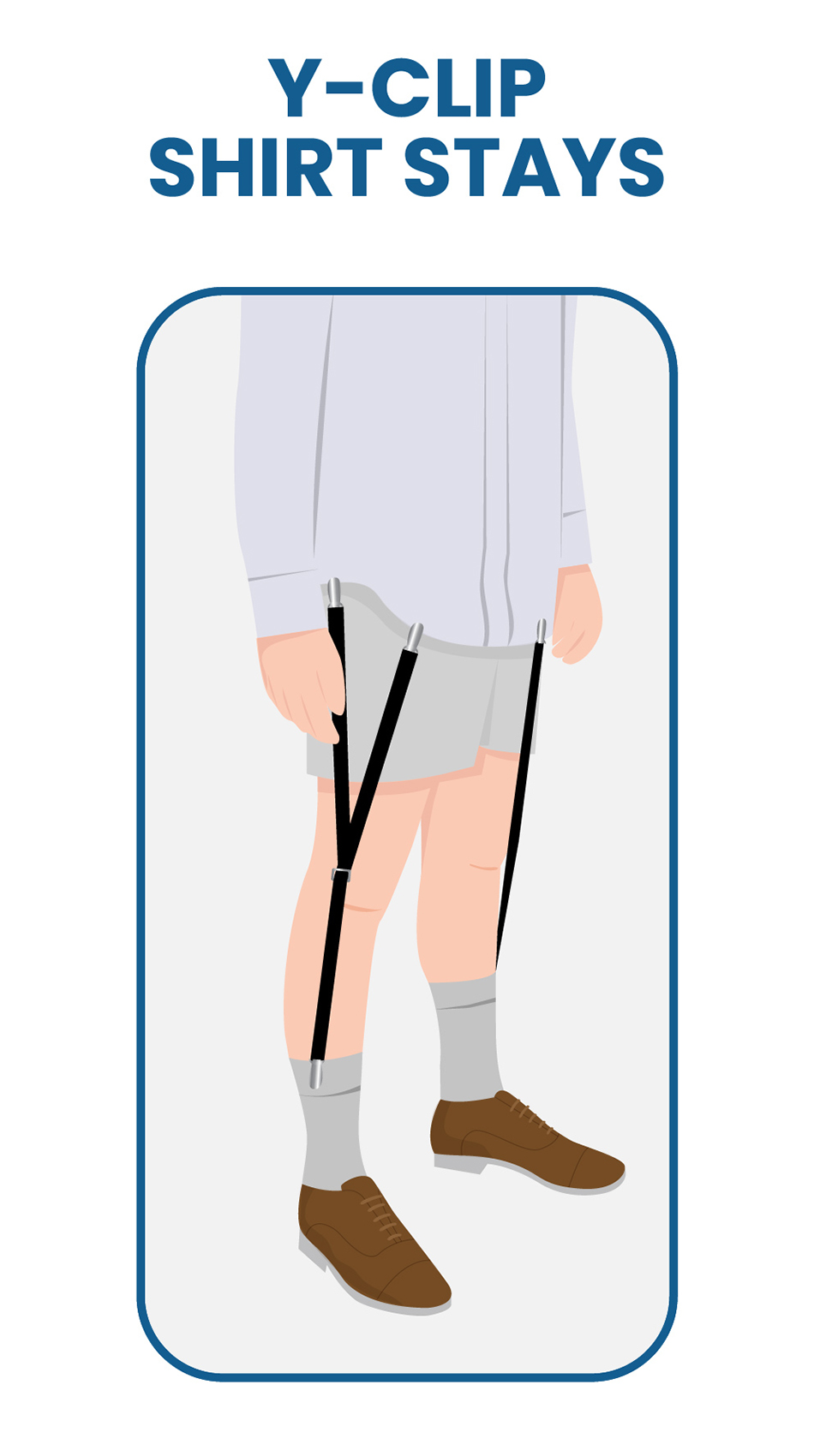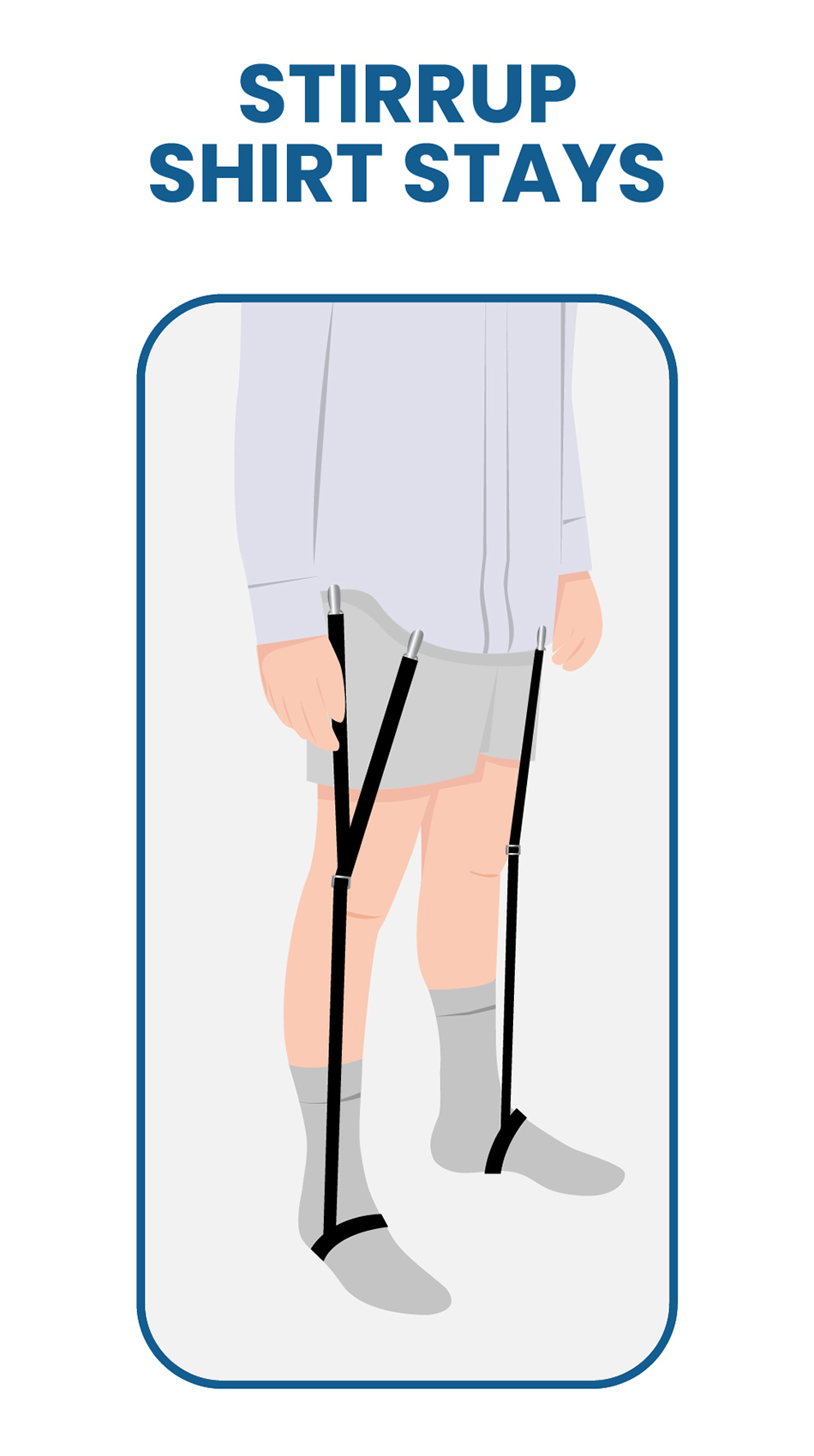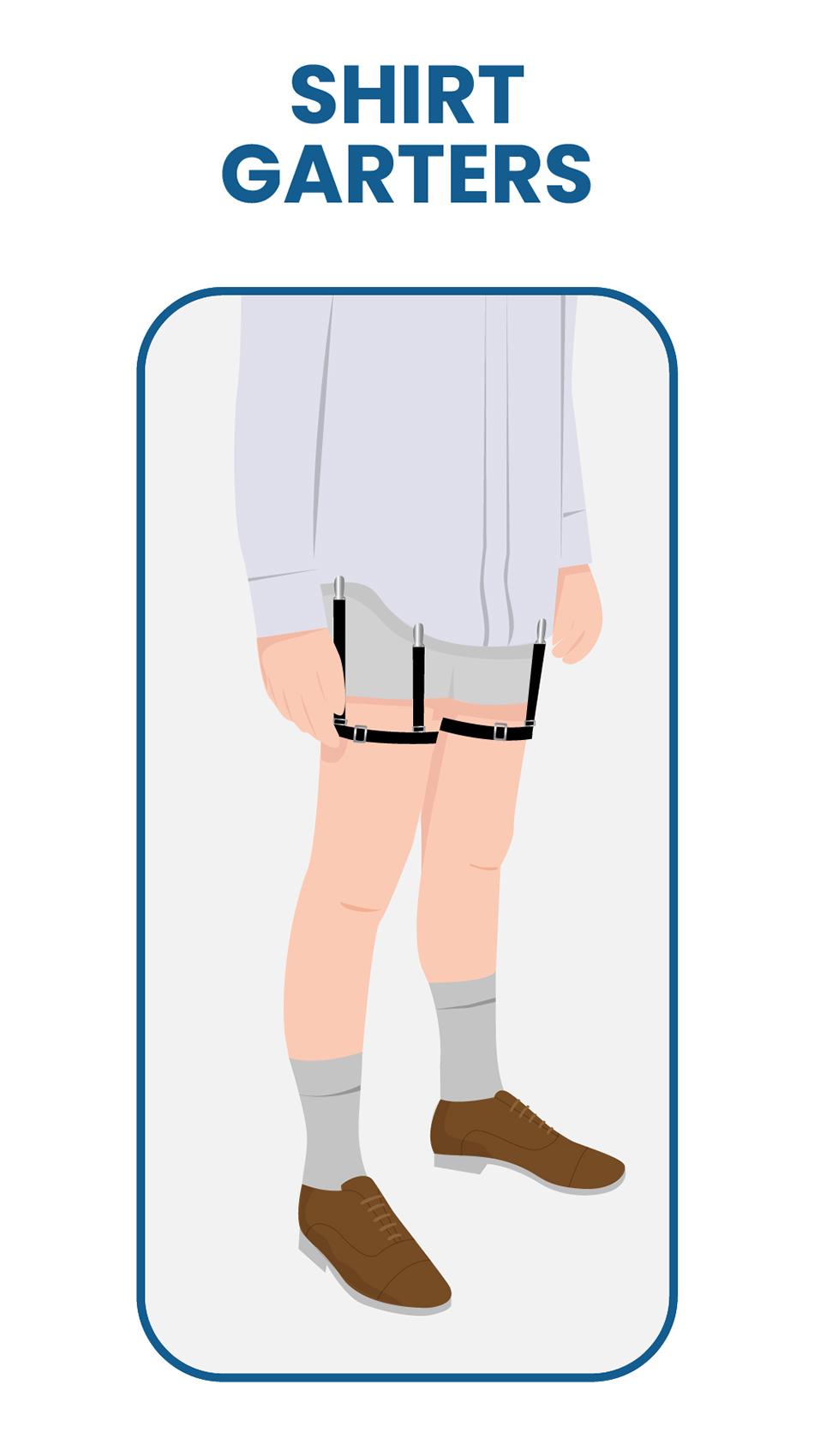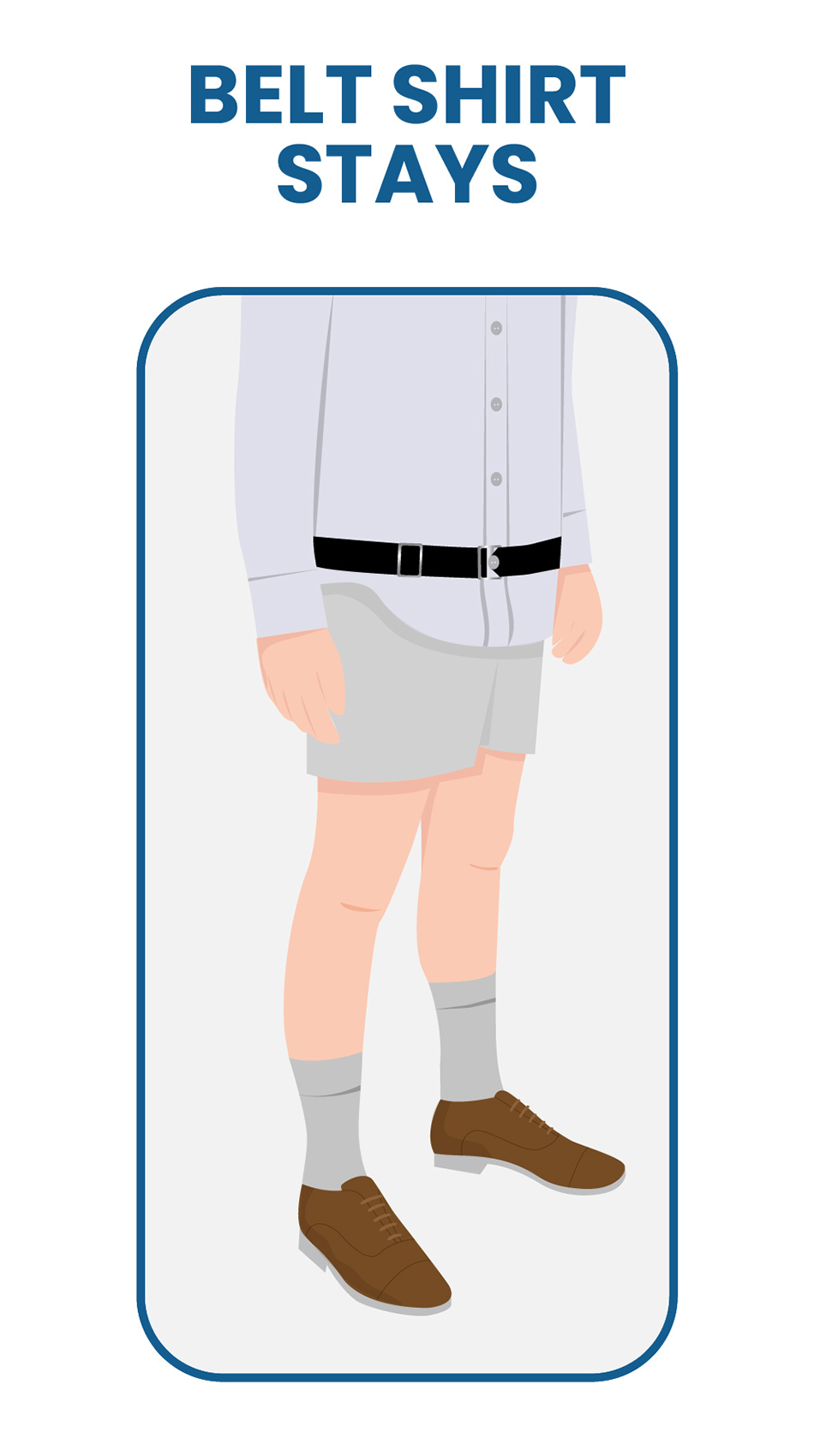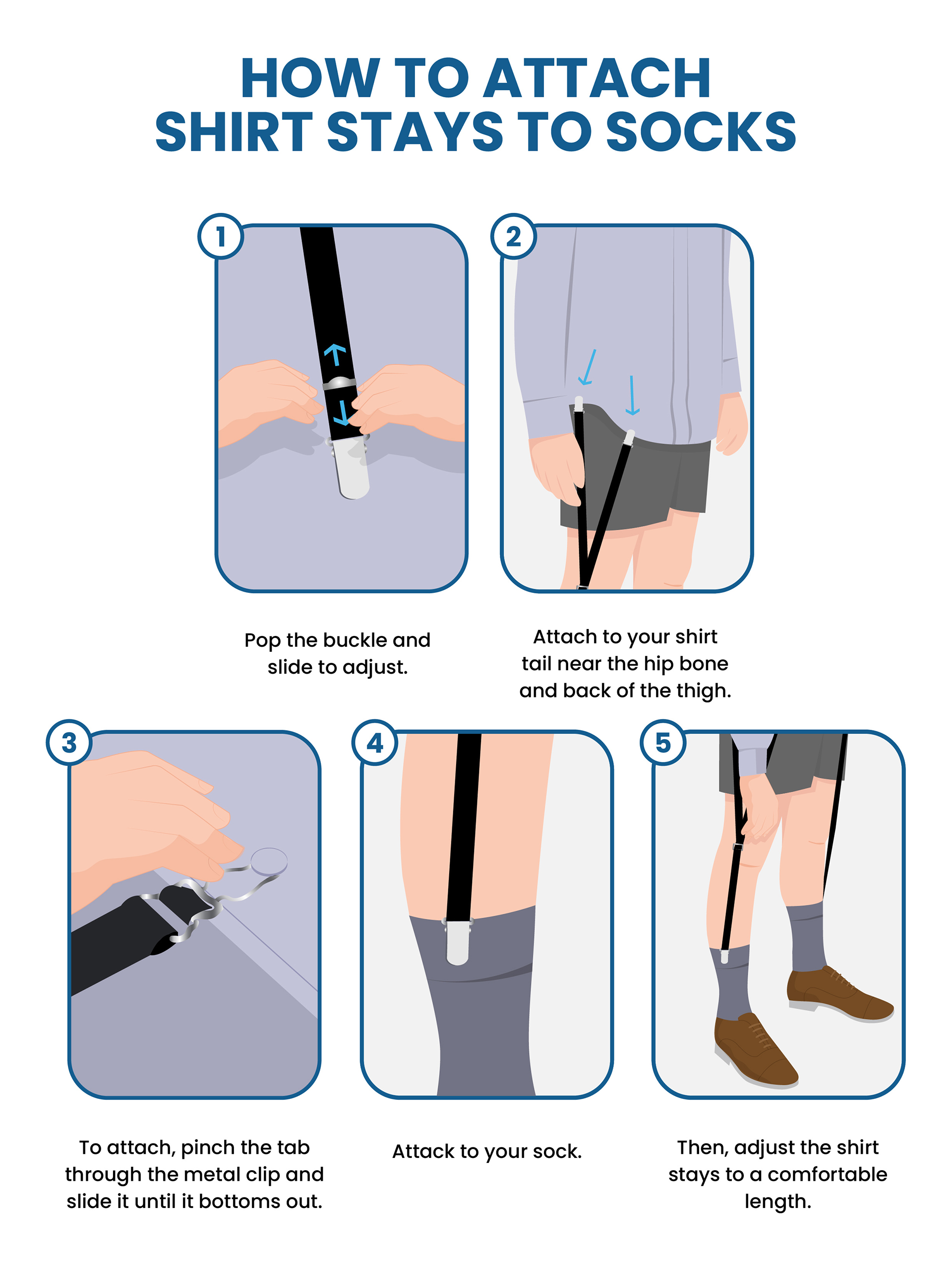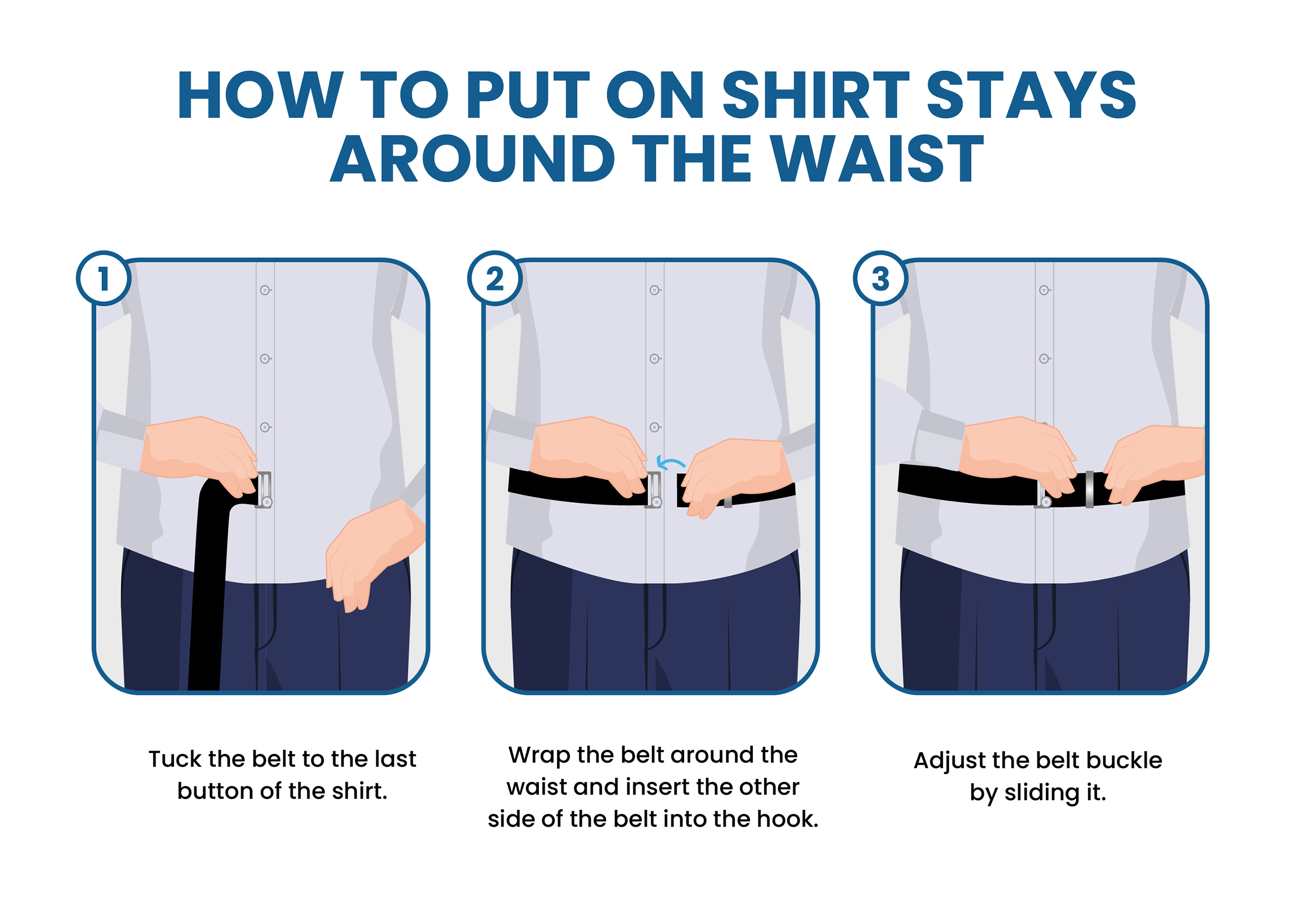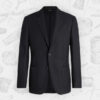If you find yourself regularly fighting with your dress shirt to keep it tucked in, maybe shirt stays are a good option for you.
These helpful little devices keep your shirt in place and preserve your prim and professional appearance. So, which ones would be best for you?
What are Shirt Stays?
Shirt stays are the secret weapon that allows you to keep your dress shirt looking smooth and tucked all day is real.
These suckers are invaluable for keeping your shirt tucked in, preventing that unsightly creep or muffin top.
Shirt stays come in different forms, but they all involve the help of elastic or rubber in some form.
And while they aren’t very common, they’re remarkably handy in keeping a precise appearance.
Clip vs. Tape Shirt Stays
Clip shirt stays are the most common style for this tool. They’re simple to use; they clip at one end to your shirt hem, while the other end usually clips to your sock’s cuff or slides under your foot.
On the other hand, tape shirt stays also come in several different versions.
The general idea is that they attach to a belt that you fasten around your waist underneath your trousers. Some other versions can be sewn, glued, or ironed directly onto your pants.
Keep Your Shirt Tucked In
Before you consider adding shirt stays to your wardrobe, you need to remember that once you tuck in your shirt, it needs to remain tucked all day.
Otherwise, if you pull your shirttails out for a more informal turn in your outfit, you’ll wind up looking like a wrinkled mess.
You won’t be able to wear your shirt untucked until you’ve ironed out those creases.
Thankfully, if you know how to keep your shirt tucked in well, you won’t feel the need to untuck your shirt.
Shirt Must Fit
Even though you’re tucking in your dress shirt and eliminating the bottom portion, your shirt must still fit perfectly.
You want your dress shirt to be long enough to stay inside your pants when you bend over. If your shirt is too short, it will easily pull out every tie you move.
But don’t go too far in the opposite direction; if your shirt is too long, you’ll find you have an embarrassing bulge all around the waistband of your trousers.
Different Shirt Stay Styles & Types
Shirt stays come in all sorts of funny styles and looks. Some may work for you better than others.
One type may give you peace of mind, while another may stress you out. It’s all about your personal preference, so you may need to experiment before landing on which shirt stay works best for you.
Straight Shirt Stays
The most traditional and least costly types of shirt stays are straight ones. They’re pretty straightforward; they’re an adjustable piece of elastic with clips at each end.
They’re easy to use since you clip one end to your shirt’s hem, and the other clip attaches to the top of your sock, with the elastic running along your outer thigh. You can adjust how tight or lose your elastic after putting it on.
These shirt stays offer you a twofer! They hold your shirt down and your socks up; kind of a win-win. The primary danger of using these is a clip popping open or the fabric pulling free from the clip.
Y-Clip Shirt Stays
This style of clip shirt stay is a tad sturdier than straight ones. They’re similar in function to the straight version but provide two clips at the top for your shirt hem.
One attaches at the side seam, and the other clips in front.
As with the other type, the third clip attaches to the top of your sock.
Stirrup Shirt Stays
If you’re looking for something to help hold your socks up, this isn’t the shirt stay for you.
Instead, the elastic on this version includes a foot strap into which you slide your foot. The main downside with stirrup shirt stays is that you have elastic under your foot all day.
The clips clamp at your shirt’s side seam and front, and the elastic is still adjustable.
Pro tip: put your socks on over the elastic! You want to keep this your dirty little secret.
Shirt Garters
With the shirt garter, elastic doesn’t run all the way down your leg. Instead, elastic wraps around the top of your thigh.
Since the result is a garter of non-slip elastic around your middle thigh, this part isn’t adjustable. So, you’ll need to measure the circumference around your leg and purchase the correct size.
The garter has two, three, or four straight bands extending up with clips to hold your shirt’s hem.
Belt Shirt Stays
Moving away from leg straps, a belt wraps around your body instead. This is a belt you put on over your dress shirt but under your trousers. You can tighten it to keep your shirt held in place.
The belt sits lower down around your hips, preventing the weird feeling of wearing two belts on top of each other.
Typically a belt shirt stay has a bit of a sticky underside. This is no fashion belt; it’s usually made from rubber or elastic.
This material prevents the strap from sliding up above your trouser’s waistband, which could be humiliating.
How To Attach Shirt Stays to Socks
Invest in a pair of straight shirt stays for a quick and easy dress shirt solution that will keep you looking smooth all day.
They may look intimidating, but don’t be fooled; they’re simple.
Open one clip and slip the outer edge of your sock cuff inside; clamp it shut.
Pull the other end up toward your shirt hem, adjusting the buckle on the elastic as needed. Attach the clip to your front hem and the side seam if there’s a second clip.
You can readjust elastic tension again if you need. You need to make sure that your elastic isn’t very tight; you should be able to bend your leg naturally.
If you feel uncomfortable, loosen the buckles.
How to Put on Shirt Stays Around the Waist
When wearing a shirt stay belt, start in your underpants and dress shirt; your pants come later.
Secure the belt around your hips, near your shirt hem. You want to keep it well above your thighs so it doesn’t get disturbed when you move your legs. However, it should also sit well below your natural waist.
Tighten the belt after you’ve secured it, but don’t go overboard. You still need to be able to breathe! After you’ve tightened it, pull up your trousers, and you’re set to go.
Hi, I’m Alex, and I’ve studied and specialized in styling in Rome. Through my writing, I want to help men dress well and learn the purpose and significance of suits and other formal attire. My final goal is to make men more confident in their wardrobe choice and life in general.
